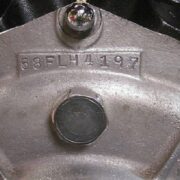Table of Contents
Key Takeaways:
- Visual inspections can reveal issues such as cracks, cuts, and bulges that compromise tire integrity.
- Maintain a minimum tread depth of 2/32 inch to ensure adequate traction and safety.
- Uneven wear patterns indicate potential problems with inflation, alignment, or suspension.
- Unexpected vibrations or noises during towing suggest potential tire or suspension issues.
- A drifting trailer may signal misaligned tires that need immediate attention.
- Worn tires can lead to longer braking distances, posing serious safety risks.
- Replace tires every six years regardless of tread depth due to rubber degradation over time.
- Check tire date codes to determine age and necessity for replacement.
- Extreme weather can impact tire integrity; seasonal adjustments may be necessary.
- Conduct regular tire inspections, checking for damage and tire pressure before trips.
- Proper tire inflation is crucial for performance and safety; check at least once a month.
- Rotate tires every 5,000 to 7,500 miles to promote even wear and prolong tire life.
The Visual Cues: Spotting Tire Trouble Before It’s Too Late
Tires are the only point of contact between your trailer and the road, and they bear the weight of your cargo, making their condition crucial for safe towing. Visual inspection is the first step in tire maintenance and can reveal issues that, if left unchecked, might lead to dangerous situations. Let’s explore the indicators that can help you discern the condition of your trailer tires.
Cracks, Cuts, and Bulges: The Tire Torture Chronicles
One of the most telling signs of tire damage is visible defects, which could manifest as cracks or cuts in the rubber. Monitor the sidewalls and tread for any irregularities—cracks can arise from environmental factors like UV exposure, road debris, or simply aging. When rubber deteriorates, it loses its ability to maintain air pressure and provide traction, increasing the risk of a blowout while on the road. Bulges, noticeable as raised sections, signify a breakdown in the inner structure of the tire, often due to previous impacts from potholes or curbs. These bulges compromise the tire’s integrity and can lead to catastrophic failure if not addressed promptly.
Regularly inspecting your tires for these signs is crucial in learning how to tell if your trailer tires are bad. If you spot any of these issues, replace the tire immediately. Neglecting such warnings can have dire consequences, not only endangering your safety but also resulting in costly repairs to your trailer and hitch.
Tread Depth: Measuring the Unsung Hero of Traction
Tread depth is critical to a tire’s performance—it directly affects traction, handling, and stopping capability. Inadequate tread depth can result in reduced grip, especially in wet conditions, increasing the likelihood of skidding or losing control. Laws may dictate minimum tread depths in your region, but for trailer tires, a general guideline is maintaining a tread depth of at least 2/32 inch. To measure tread depth, use a tread depth gauge or the penny test: insert a penny into the tread with Lincoln’s head facing down. If you can see the top of Lincoln’s head, your tread is worn out and the tire should be replaced. Newer tires often feature indicators or wear bars that become visible as the tread wears down, providing an easy reference point for replacement. Regularly evaluating tread depth not only prolongs the life of your tires but also significantly enhances road safety.
Uneven Wear Patterns: What Your Tires are Trying to Tell You
The wear patterns on your tires can be an important diagnostic tool in assessing tire health. Uniform wear indicates that your tires are balanced and aligned properly, which is essential for optimal performance. However, if you observe uneven wear—such as excessive wear on one side or in the center—it indicates underlying issues, possibly stemming from incorrect inflation, alignment problems, or suspension faults. For instance, underinflation can cause the edges of the tire to wear out faster, while overinflation tends to wear the center more rapidly. Monitoring these patterns and understanding their causes is crucial. Failure to address the root of the problem can lead to premature tire degradation, poor traction, and ultimately an unsafe towing experience.
The Performance Indicators: How Your Trailer Handles the Road
While visual checks are vital, a tire’s performance on the road will provide additional cues about its condition. The way your trailer behaves during rides can reveal hidden issues that require immediate attention.
Vibration and Noise: When Your Trailer Becomes a Bumpy Ride
Any unexpected vibrations or noises during operation can signal problems with your tires and should not be overlooked. A smooth, quiet ride is indicative of healthy tires and proper alignment. If you feel shaking through the vehicle or hear a thumping or humming noise while driving, it could indicate a problem, such as an unbalanced tire or perhaps a misalignment that warrants inspection. In some cases, these vibrations might stem from issues with the suspension or axle, making it imperative to investigate thoroughly. Regularly driving with compromised tires can accelerate wear on the trailer itself and worsen any existing issues, leading to more expense and, ultimately, safety risks.
Steering Sensitivity: Are Your Tires Causing a Drift?
If you find that your trailer is pulling to one side while being towed, this could indicate uneven wear or misalignment of your tires. Proper alignment ensures that all tires make even contact with the ground, which is crucial for stable steering and handling. A trailer that drifts can create unsafe driving conditions, not only increasing the workload on the towing vehicle but also potentially leading to loss of control. Regularly check your tires for correct alignment by examining how they rest on the road surface. A quick visit to a tire or automotive shop can help diagnose alignment issues before they escalate.
Braking Response: The Critical Role of Tire Condition
The state of your tires plays a significant role in your trailer’s braking performance. Proper tire maintenance ensures that stopping distances remain manageable, which is vital given the potential weight of trailers during towing. Worn-out tires can lead to longer stopping distances, compromising safety during unavoidable sudden stops. If you notice a delayed response when braking or require greater force to come to a halt, it’s time to assess your tire’s condition critically. Even if the tread appears adequate, the internal structure may be weakened. This is particularly true for older tires or those that have not been properly maintained.
The Time Factor: Age Isn’t Just a Number for Tires
Time can wear down even the most robust of tires. It’s essential to recognize that both age and usage can compromise tire integrity, regardless of their apparent outward condition.
Shelf Life vs. Mileage: When Time Takes Its Toll
Tires have a limited lifespan, even if they’ve hardly been used. Most tire manufacturers recommend replacing tires every six years, even if tread depth remains adequate. This is due to the gradual degradation of rubber compounds that occurs over time, which weakens the tire and increases the likelihood of failure. Understanding the difference between mileage and age is key. A tire might have a low mileage count but could be significantly aged, leading to increased susceptibility to failure. This truth underscores the importance of maintaining detailed records of your trailer use, examination, and maintenance.
Date Codes: Decoding Your Tires’ Birth Certificate
All tires manufactured after 2000 include a Department of Transportation (DOT) number, which encodes the tire’s age. The last four digits of this number indicate the week and year of manufacture (e.g., “2319” signifies production during the 23rd week of 2019). Periodically check your tires’ date codes to ascertain their age and evaluate if it is time for a replacement. This knowledge can drastically alter your approach to tire maintenance and safety.
Seasonal Changes: How Weather Impacts Tire Integrity
Weather fluctuations can have a profound impact on tire health. Extreme temperature variations can cause the rubber to expand and contract, leading to micro-cracking that may not always be visible. Additionally, conditions such as snow and ice require proper tread depth and composition for optimal performance, and tires designed for moderate conditions may not suffice in extreme weather situations. Monitoring tire integrity throughout changing seasons allows you to make timely adjustments to your maintenance practices and replacements. Always consider investing in seasonal tires suited for your typical routes, optimizing safety during extreme weather conditions.
Maintenance Matters: Ensuring Your Trailer Tires Stand the Test of Time
Regular maintenance is the cornerstone of tire longevity. By implementing proactive practices, you can help your tires withstand the test of time, ensuring safe and effective towing experiences.
Regular Inspections: Keeping an Eye on Your Rubber Road Friends
Conducting regular tire inspections is crucial for trailer safety. Aim to visually examine your tires each time you prepare for a trip. Look for visible signs of damage, check air pressure, and evaluate tread depth. Even minor damage should be addressed before hitting the road. Automating reminders for routine maintenance can help you avoid negligence and ensure your tires are always in top condition. Additionally, consider tracking tire health with a logbook detailing inspections, rotations, and replacements. By keeping a historical record of tire maintenance, you can identify patterns that may require attention, allowing you to strategize better maintenance schedules.
Proper Inflation: The Balancing Act for Optimal Performance
Maintaining proper tire pressure is fundamental for ensuring tires perform optimally. Both under-inflation and over-inflation can lead to skewed wear patterns, compromised traction, and even blowouts. It’s advised to check tire pressure at least once a month and adjust according to the manufacturer’s guidelines. Many modern vehicles come with a Tire Pressure Monitoring System (TPMS), automatically notifying the driver when pressure falls outside of the recommended range. Being cautious about maintaining proper inflation goes a long way. Tires that are inflated to the correct specification should ensure better fuel efficiency, smoother rides, and prolonged tire life.
Rotating Tires: The Secret to Even Wear and Long Life
Tire rotation is a practice that can significantly extend tire life. By switching tires from front to back and side to side, you help to even out wear and tear among all four tires. Different positions on a trailer experience varying amounts of stress; for instance, the tires on a drive axle may wear down more rapidly compared to non-driving tires. It is recommended to rotate your tires every 5,000 to 7,500 miles or at the time of each oil change. Regular rotation schematics can be provided by your tire manufacturer or local mechanic, allowing your tires to wear evenly and maintaining their highest performance level. Ultimately, proactive maintenance is about adopting a mindset of safety and vigilance. By understanding the indicators of tire health and recognizing the factors that impact their longevity, you position yourself to enjoy a safe, enjoyable, and trouble-free towing experience. Prioritize your trailer tires as they are essential to your overall safety on the road and ensure that proper preventative measures are taken to address any issues before they escalate.

















Comments